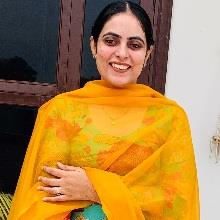The textile industry is one of the oldest and most important industries in the world economy, with labour-intensive processes and major environmental implications. However, the introduction of AI is causing a paradigm change. AI technologies like machine learning, computer vision, and predictive analytics are being used to expedite processes, decrease waste, and improve the overall quality of textile goods.
Optimising Production Processes
1. Automation and Robotics: AI-powered automation is at the forefront of changing textile production. AI algorithms lead automated systems and robots in doing repetitive and labour-intensive operations such as cutting, stitching, and dyeing. These AI-powered devices operate with incredible accuracy and speed, cutting manufacturing time and decreasing human error.
2. Predictive Maintenance: One of the most significant obstacles in textile manufacturing is machine downtime due to maintenance concerns. AI may anticipate probable equipment problems by evaluating data from sensors implanted in the gear. This predictive maintenance strategy guarantees that equipment is maintained at opportune times, reducing unexpected breakdowns and increasing output.
3. Supply Chain Optimisation: AI is also helping to optimise supply chain management. AI is capable of forecasting demand, managing inventories, and streamlining logistics via predictive analytics. This leads to a more flexible and agile supply chain that can adjust to market variations while also lowering excess inventory and related expenses.
4. Energy Efficiency: Textile production is energy-intensive, and artificial intelligence can help with energy saving. AI algorithms evaluate energy use trends and find ways to save energy. For example, AI can optimise heating and cooling systems, lighting, and machinery operating schedules to reduce energy waste, resulting in cost savings and a lower carbon impact.
Enhancing Quality Control
1. Computer Vision for Defect Detection: AI-powered computer vision systems are transforming quality control in textile production. These technologies utilise advanced imaging methods and machine learning algorithms to detect fabric problems with unprecedented precision. Unlike traditional approaches, which rely on human inspectors, AI systems can detect even minor flaws such as weaving faults, stains, or colour variations, guaranteeing that only high-quality items make it to market.
2. Consistency and Standardisation: Maintaining uniformity and standardisation in textile goods is critical to brand reputation and consumer happiness. AI guarantees that each product fulfils the required quality standards by constantly monitoring the manufacturing process and making real-time modifications. This is especially critical in dyeing and finishing procedures, where exact control of colour and texture is required.
3. Real-Time Monitoring and Feedback: AI technologies provide real-time monitoring and feedback throughout the production process. Sensors and cameras installed at various phases of manufacturing capture data, which is then evaluated by AI algorithms to detect deviations from the expected parameters. This fast input enables prompt remedial measures, avoiding faults from spreading across the production process.
4. Enhanced Data Analytics: AI uses big data analytics to acquire insights into quality management. AI can detect patterns and trends in previous data that contribute to flaws or discrepancies. This data is crucial for continuous improvement initiatives, allowing firms to fine-tune their processes and increase product quality over time.
Case Studies and Examples
Several major textile producers are already seeing the benefits of AI integration. For example, Levi Strauss & Co has used AI-driven laser technology to degrade jeans, which not only enhances accuracy but also saves water and chemicals. Similarly, Adidas uses AI-powered robots in its Speedfactory to create bespoke shoes with unparalleled efficiency and consistency.
Challenges and Future Prospects
While AI has enormous potential for the textile sector, its implementation is not without obstacles. Manufacturers confront a number of challenges, including high initial investment costs, the requirement for experienced staff, and worries about data privacy and security. However, as technology advances and becomes more accessible, these barriers are expected to reduce. The future of AI in textile production is bright. AI-powered smart fabrics, which may change colour or texture in reaction to ambient stimuli, are one example of an upcoming innovation. Furthermore, combining AI with other sophisticated technologies such as the Internet of Things (IoT) and blockchain will improve transparency, traceability, and sustainability throughout the textile supply chain.
Conclusion
AI is clearly revolutionising textile industry by streamlining production processes and improving quality control. AI is providing considerable operational efficiency gains through automation, predictive maintenance, supply chain optimisation, and energy saving. In quality control, AI’s flaw identification, consistency, real-time monitoring, and data analytics capabilities ensure that textile goods meet the highest standards. Despite the hurdles, the future of AI in the textile sector seems promising, with limitless opportunities for innovation and development. By embracing AI, the textile industry is poised to achieve new heights in efficiency, sustainability, and product quality, ultimately benefiting manufacturers, consumers, and the environment alike.


 (1)20240730094415.jpg)







Comments